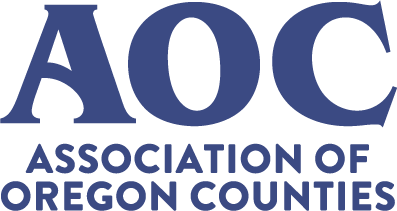
Mar 22, 2023 | Natural Resources
Following the passage of SB 762, the 2021 Legislative Session’s comprehensive wildfire policy, the Association of Oregon Counties (AOC) took an active role in ensuring its implementation information was provided to county staff and elected officials by state agencies. AOC hosted webinars regarding the state drawn wildfire map during the summer and the AOC Annual Conference featured a panel discussion entitled “Wildfire and the Changes Brought by SB 762.” The association continued discussions thereafter.
Because of AOC’s continued engagement and direct dialogue with our state partners and legislative leaders, Senator Jeff Golden, who championed the 2021 legislation, assured AOC that advanced notice will be provided to commissioners, judges, chairs, and counties when wildfire related issues come before the Senate Committee on Natural Resources and Wildfire Recovery, a committee that he chairs.
The AOC conference panel featured four speakers and was moderated by Baker County Commissioner and Wildfire Programs Advisory Council Chair, Mark Bennett.
Speakers:
- Wildfire Programs Director Doug Grafe reviewed implementation process of all agencies;
- Department of Land Conservation and Development (DLCD) Director Brenda Bateman overviewed the DLCD Wildfire Report;
- Oregon State Fire Marshal Mariana Ruiz-Temple presented on the Community Wildfire Risk Reduction Grant, as well as others available through her department (these grants are aimed to help protect people, property, and communities from wildfire through various forms of risk reduction programs);
- Oregon Department of Forestry Wildfire Chief Mike Shaw covered the pullback of the Wildfire Risk Map as well as the public hearings they held throughout the state after the map came out.
After the panel presented, Commissioner Bennett provided Senator Golden, who was in the audience for this session, the opportunity to address those in attendance. As the Senator who helped shepherd the legislation through both chambers it was crucial to hear his thoughts on the bill’s implementation. Due to limited time for questions and answers following the conference panel, AOC organized a virtual Q&A session on Tuesday, December 13.
At the December 13 meeting entitled “Wildfire Meeting, a Q&A with Commissioners,” those in attendance were joined by original panelists, DLCD Policy Advisor Palmer Mason, Senator Golden, and State Forester Cal Mukumoto. After a few introductory remarks by the panelists, the remainder of the meeting was spent answering questions. Grafe made reference to a report from the Rogue Forest Partners regarding resiliency efforts underway in the Rogue Basin, Commissioner Bennett, Chair of the Wildfire Programs Advisory Council, referenced the council’s final 2022 Annual Report on recommended changes, and Chief Shaw shared the “Key Issues Identified in Review of the Wildfire Risk map Feedback.”
One issue that got a lot of attention during the December 13 meeting was the inability of counties to implement SB 391 (2021), which allows for the rural residential Accessory Dwelling Units (ADUs) due to the statutory requirement that statewide risk maps first be adopted. AOC staff is working with DLCD, county planning staff, and legislators on a legislative concept that would decouple rural residential ADU authority from the wildfire risk map while maintaining appropriate wildfire risk mitigation measures.
All of the panelists asked that their contact information be shared as a way to be available to answer any additional questions that might arise:
Senator Jeff Golden (D-Ashland) – sen.jeffgolden@oregonlegislature.gov
Wildfire Program Advisory Council Chair and Baker County Commissioner Mark Bennett – mbennett@bakercounty.org
Office of the Governor Wildfire Programs Director Doug Grafe – doug.c.grafe@oregon.gov
Department of Forestry State Forester Cal Mukumoto – cal.t.mukumoto@odf.oregon.gov
Department of Forestry Wildfire Division Chief Mike Shaw – michael.h.shaw@odf.oregon.gov
Office of the State Fire Marshal State Fire Marshal Mariana Ruiz-Temple – Mariana.Ruiz-temple@osp.oregon.gov
Department of Land Conservation and Development Senior Policy Advisor Palmer Mason – palmer.mason@dlcd.oregon.gov
Contributed by: Branden Pursinger | Legislative Affairs Manager

Mar 21, 2023 | AOC Business Partner
Tekniam’s Remote Universal Communication System (RUCS) is a compact rapidly deployable wireless broadband network empowering emergency responders and providing rural broadband internet in areas with little to no service.
JOHN DAY, Ore. (PRW) March 14, 2023 — Tekniam has provided Grant County, Oregon with the latest proprietary breakthrough in wireless communications. The Remote Universal Communication System, or RUCS broadband network, can be set up in minutes to operate anywhere. The Grant County RUCS project was funded through a U.S. Department of Homeland Security grant awarded late last year.
Grant County located in east-central Oregon, is one of the most rural, isolated counties in the lower 48 United States. The county is larger than some states, yet it averages only 1.6 people per square mile. Outside its small towns, the terrain is vast and often hard to reach. Its deeply eroded and arid topography is marked by many box canyons with steep walls. This has made providing Grant County with rural broadband internet especially challenging – until now!
The RUCS breakthrough technology is compact, easy to hand-carry, and sets up in minutes. This compares with previous technology many times its size at a higher cost to buy, transport, and operate. Starting at five pounds, or 2.2 kg, it has a very low five-to-eight-watt power draw, much lower than any of its competitors. Yet it transmits a powerful signal up to three miles to a distribution point. It can serve up to 250 Wi-Fi users within a 1000-ft radius. It simply needs an Internet signal and a power source, that can be AC, DC, or solar.
While former solutions required large equipment that had to be transported in a truck or trailer and continuous gasoline to operate, RUCS is truly revolutionary making possible exciting new opportunities with a wireless internet network that can be hand carried and set up anywhere.
Grant County Sheriff Todd McKinley has the ongoing issue of finding and rescuing missing persons. The county hosts the spectacular John Day Fossil Beds National Monument. Every year fossil hunters, hikers, and game hunters regularly become lost or go missing. These vast empty spaces require search and rescue teams to be sent out to find them.
Sheriff McKinley and his Office of Emergency Management immediately grasped the capability to set up an internet-anywhere field emergency command post with an easy-to-carry, lightweight RUCS off-grid network. First responders, including fire fighters, need up-to-date weather and situational updates with images that only broadband internet can provide.
“We are fortunate to now have a RUCS unit on hand. The capabilities that it can provide will aid in a variety of events that can occur. Having the RUCS pre-staged in our county will save hours of response time for equipment that would otherwise need to be shipped in from hundreds of miles away during a crisis. And that time can add up to the difference in saving lives, or not.”
RUCS makes exciting new capabilities for search and rescue operations. An internet signal can be beamed from the high walls of the box canyons. It can be titled “Missing Persons Network” that lost hikers with cell phones can receive. They can send messages with location and condition that search and rescue teams can receive in real time with an internet connection.
Grant County officials compared RUCS with the competition and had seen that, for the cost of a competitor’s single unit, an entire constellation of RUCS units could be acquired. Tekniam’s patented antenna technology is the enabling technology that makes RUCS able to support 10 to 15 “hops,” with a distance of up to 30 to 35 miles.
This initial installation provides the core building blocks for Grant County to create a comprehensive base camp for distributed emergency and disaster response, as well as rural broadband internet coverage county-wide.
###
About Grant County Emergency Management
Located in John Day, Ore., the Office of Emergency Management has the mission to provide the organized analysis, planning, decision-making, and assignment of available resources to protect from, mitigation of, prepare for, respond to, and recover from the effects of all hazard emergencies and disasters within Grant County. Read about it at https://grantcountyoregon.net/182/Emergency-Management.
About Tekniam
Headquartered in Lenexa, KS, Tekniam was founded in 2021 to bring connectivity to the most remote locations in the world. Products are made and assembled in the United States.
Learn more at Tekniam.com.
Contributed by: Tim Stranahan | Tekniam Chief Operations Officer
*Sponsored content provided by AOC Business Partner.

Mar 21, 2023 | AOC Business Partner
With the new year underway, for many it’s a good time to set both personal and professional goals. One goal that should make the list is ensuring that county employees always receive training each year. An effective training program can help employees and their supervisors be more successful in their roles — and help promote compliance with policies and procedures.
For many counties, assigning and tracking training can be difficult. Annual training requirements can range from a mandatory bloodborne pathogens course for some staff to a required cyber security or sexual harassment training for all staff. Creating an annual training plan provides a structure for employee development throughout the year. It also enables counties to review progress at desired intervals.
With that in mind, here are a few steps to take for a successful 2023.
- Identify Required Training for Staff
The first step in creating a learning plan is to identify required training. This includes training required by law, by contractual obligations, or by organization. Be sure to think about training for both new hires as well as existing employees — CIS can help set up training plans for both.
There’s no such thing as “one size fits all” when it comes to the learning initiatives that are important to CIS members. The 108 customized plans in the CIS system are composed of 192 different courses. They range from just one course on the plan to over 30! Some of the most common we see include:
- Bloodborne Pathogens;
- Cyber Security Basics;
- Preventing Discrimination and Harassment;
- Distracted Driving;
- Valuing Diversity; and
- Personal Protective Equipment.
- Decide How Often Staff Should Take Training
Training can be set at the beginning of the year, and can be automatically assigned to staff at any desired interval. Receiving five required training courses in March can seem daunting, but plans can be set to assign one per month or quarter. In addition, reports can be set to alert staff monthly, quarterly, or annually to show completed courses as well as those who have outstanding assignments.
- Contact the CIS Learning Center for Help
Once county staff have identified what training is required and how often employees should receive it, the final step is setting up a training plan in the CIS Learning Center. Each plan is highly customized to meet each member’s specific needs.
A customized learning plan allows one to choose which courses to include, set due dates or recurrence intervals, and automate assignments, if desired. CIS can also include items such as internal policies or new hire packet documents for online review along with electronic acknowledgments and tracking reports. There are many custom options available and the CIS team is happy to help find just the right mix to meet a county’s needs.
Contributed by: Bill LaMarche | CIS Public and Member Relations Manager
*Sponsored content provided by AOC Business Partner.

Mar 17, 2023 | AOC News
The Joint Committee on Ways and Means Co Chairs Senator Elizabeth Steiner (D-Beaverton) and Representative Tawna Sanchez (D-Portland) announced a series of public hearings on the state budget in four locations around the state: Portland, Newport, Roseburg, and Ontario.
The public hearings will kick off on April 8 at Portland Community College- Sylvania Campus. Public testimony will be taken from 10 a.m. to 12 p.m.
How to Testify:
Members of the public will be able to access sign up links on the Ways and Means Committee’s webpage to testify. Sign up links will be available online in the next week.
Public Hearing Schedule:
Date: Saturday, April 8
Time: 10 a.m. – 12 p.m. (PDT)
Location: Portland Community College – PAC Auditorium, Sylvania Campus 12000 SW 49th Ave, Portland, OR 97219
Date: Friday, April 14
Time: 5 p.m. – 7 p.m. (PDT)
Location: Newport Performing Arts Center 777 W Olive St, Newport, OR 97365
Date: Friday, April 21
Time: 5 p.m. – 7 p.m. (PDT)
Location: Umpqua Community College 1140 Umpqua College Rd, Roseburg, OR 9747
Date: Friday, April 28
Time: 5 p.m. – 7 p.m. (MTZ)
Location: Four Rivers Cultural Center 676 SW 5th Ave, Ontario, OR 97914
All hearings will be open to the public and members of the press.
To view the original release, click here.
Contributed by: Megan Chuinard | Public Affairs Associate
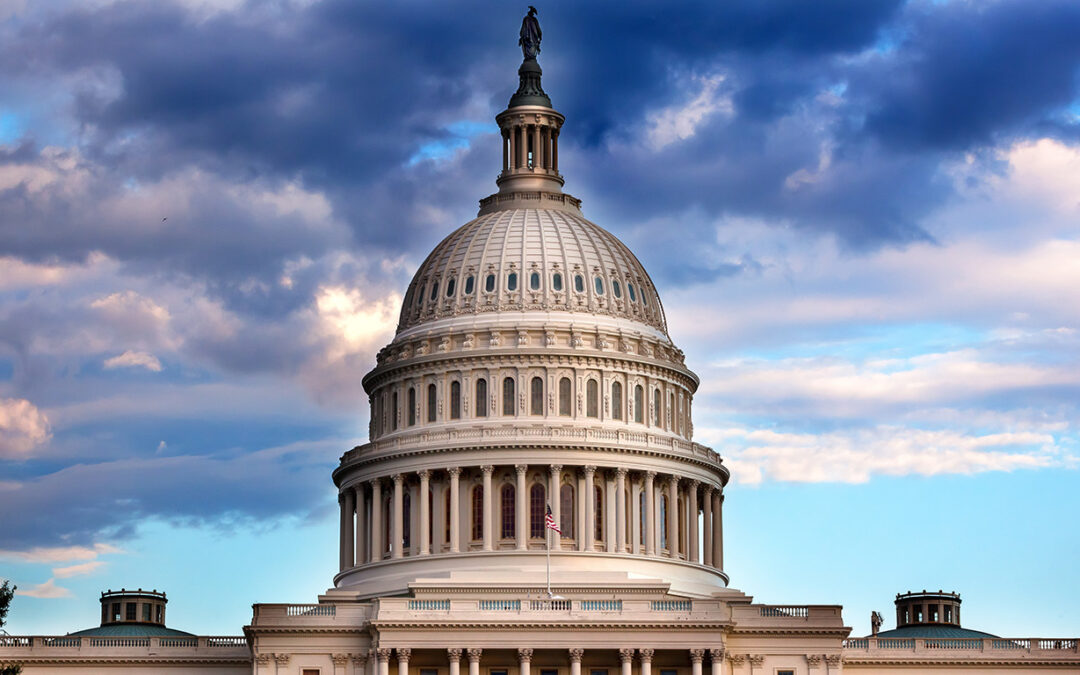
Mar 17, 2023 | NACo
EXECUTIVE SUMMARY
The nation’s 3,069 counties play a key role in administering federal programs and services in our local communities. Counties own and operate public infrastructure, transportation, and economic development assets, provide public safety and emergency response services, and protect the public’s health and well-being. Counties are principally responsible for the delivery of essential local services to our residents, and we rely on a robust intergovernmental partnership to help support our work every day.
This analysis will include summaries highlighting proposed cuts, eliminations, or increases to key federal programs in the president’s budget request for Fiscal Year (FY) 2024 that are relevant to county governments and a section-by-section summary of the budget outlining items of note for county governments.
For the full article provided by National Association of Counties (NACo), click here.
PROPOSED CHANGES TO BASE DISCRETIONARY FUNDING IN BIDEN’S BUDGET
TOP HIGHLIGHTS FOR COUNTIES
- Continued funding for critical Bipartisan Infrastructure Law (BIL) programs for highways, highway safety, and transit formula programs. This includes $60.1 billion for the Federal-Aid Highway program, $14 billion to support transit agencies across the country, and investment in environmental permitting programs to expedite delivery of new and modernized infrastructure.
- Increased funding for mental health services, including additional funding for the U.S. Department of Health and Human Services (HHS) Substance Abuse and Mental Health Services Administration and the 9-8-8 crisis line, a $1.3 billion increase in substance abuse prevention and treatment activities, and $387 million towards workforce development in training 18,000 behavioral health providers.
- Dedicated support for the nation’s veterans and military families, including $20.3 billion for the Toxic Exposures Fund (TEF).
- Direct investment in local law enforcement agencies by providing $4.9 billion in discretionary grant funding, including $537 million for the COPS Hiring Program which would represent a $213 million increase over FY 2023 enacted levels.
- Reinstatement of the Child Tax Credit, which resulted in a 50 percent drop in child poverty rates in 2021, the largest decrease ever recorded.
- Direct investments in clean energy and water utility infrastructure projects, including $425 million to support increasing the energy efficiency and the weatherization of the homes of low-income individuals, and $4 billion for upgrading drinking water and wastewater infrastructure with an emphasis on underserved and rural communities.
- Increased investments in local election systems, with $5 billion in mandatory election assistance grants over 10 years to be administered by the U.S. Election Assistance Commission (EAC).
- Expanded support for continued rural broadband deployment funding, via a $400 million in funding for the U.S. Department of Agriculture’s (USDA) ReConnect Program, a county-eligible program which funds telecommunications infrastructure in primarily rural service areas that lack high-speed internet infrastructure.
FEDERAL BUDGET PROCESS
THE PRESIDENT SUBMITS BUDGET PROPOSAL TO CONGRESS
Under current law, the president must submit the budget request between the first Monday in January and the first Monday in February.
HOUSE AND SENATE BUDGET COMMITTEES DEVELOP AND REPORT BUDGET RESOLUTIONS
If the respective chambers pass these resolutions, they reconcile them in a budget conference. This sets the total amount of money congressional Appropriations Committees may spend for the fiscal year. If the two chambers are not able to agree on a budget resolution, each chamber may enact a “deeming resolution,” which sets appropriations levels for that chamber’s Appropriations Committee.
HOUSE AND SENATE APPROPRIATIONS COMMITTEES ALLOCATE FUNDING TO FEDERAL PROGRAMS
The committees set specific discretionary funding levels for federal programs among 12 subcommittees, each dealing with a different part of the budget. After the respective chambers pass individual appropriations bills, they must go to conference to reconcile the appropriations bills for a final vote.
THE PRESIDENT SIGNS FUNDING BILLS INTO LAW
All 12 funding bills must be enacted in time for the beginning of the new fiscal year on October 1. In recent years, the government has struggled to meet this deadline and instead passed temporary extensions of current spending levels, known as continuing resolutions, well into the new fiscal year. |
OVERVIEW: THE PRESIDENT’S FY 2024 BUDGET REQUEST
TOPLINE NUMBERS
On March 9, President Biden released the FY 2024 budget request outlining the administration’s proposal for budgetary spending for the fiscal year beginning October 1, 2024. The president’s budget requests a total of $6.9 trillion in both mandatory and discretionary federal spending in FY 2024. Federal spending in FY 2024 is not subject to statutory spending caps prescribed by the Budget Control Act of 2011, which has expired as of 2022 and allows lawmakers to decide funding levels for appropriations each year.
With divided control in the 118th Congress, it is anticipated that the Republican majority in the House of Representatives will proposed significant alterations the president’s budget request. Additionally, new rules in the House may dictate the outcome of negotiations the federal budget. This includes the cut-as-you-go rule, which considers out of order any new mandatory spending request that is not offset by revenues raised, and a rule which specifies a stand-alone vote on raising the federal debt ceiling is required as opposed to attaching a raise of the debt ceiling limit to a general appropriations bill.
DEFICIT & DEBT
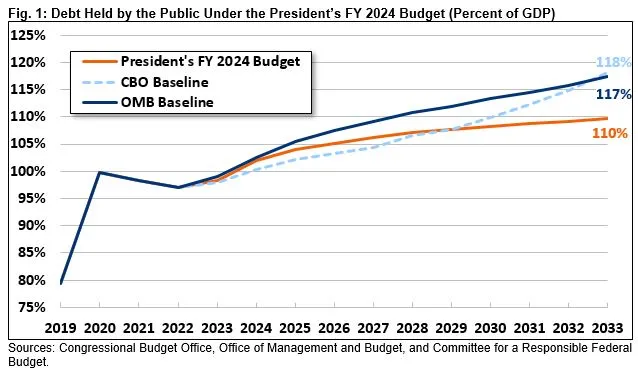
The federal budget deficit is estimated to rise from $1.4 trillion in FY 2022 to $1.8 trillion in 2024. In nominal dollars, the national debt under the president’s budget would grow to $43.6 trillion by the end of 2033, which is $3 trillion under the Office of Management and Budget’s (OMB) latest baseline projection. The president’s budget includes a significant deficit reduction mechanism that would reduce budget deficits by $3 trillion over 10 years when compared against current budgetary trends.
Deficit-reducing items in the president’s budget principally include alterations in the tax code that increase the corporate income tax rate; an adoption of the undertaxed profits rule; providing tax revisions for multinational corporations; imposing minimum income tax on the wealthiest taxpayers; increasing the excise tax on stock buybacks; increasing the top marginal income tax rate for high earners; revising capital income taxation; increasing Medicare taxes for high-income taxpayers; expanding Medicare drug price negotiations; taxing pass-through business income of high-income taxpayers; and other measures.
Congress will need to pass legislation to raise the current debt ceiling limit, as the U.S. reached the debt ceiling limit in January of 2023 and the U.S. Department of the Treasury has initiated extraordinary measures since that time to prevent the U.S. from defaulting on payments. The extraordinary measures are projected to only last through June of 2023, by which Congress will need to act.
MAJOR PROPOSALS OF SIGNIFICANCE TO COUNTIES
AGRICULTURE AND RURAL AFFAIRS
Continued funding for the Rural Partners Network and other U.S. Department of Agriculture (USDA) Rural Development Initiatives
The president’s budget request included $977.2 million for USDA Rural Development salaries and expenses, a $176.1 million increase from FY 2023 enacted levels, and $32 million to expand the Rural Partners Network, a critical resource to rural communities seeking to take advantage of federal funding opportunities.
Increased water and waste disposal funding
The president’s budget request included a total program level of $2.4 billion for the water and wastewater disposal program, which represents an increase of $323.7 million above the 2023 level. A total of $717.4 million in grant funding would be made available through the water and waste disposal project grants program, which represents a $133.7 million increase above FY 2023.
Renewed investment in crop funding
The president’s budget request revived a lapsed USDA subsidy program which pays out $5 an acre in crop insurance premium subsidies to farmers who planted cover crops in 2021 and 2022. This program was originally funded through COVID-19 relief legislation and was not funded again in FY 2023. The administration’s proposal would make these payment permanent at a 10-year cost of $950 million.
COMMUNITY, ECONOMIC, AND WORKFORCE DEVELOPMENT
Expanded investment in the Investment Partnerships Program (HOME)
The president’s budget request called for an increase of $300 million to the HOME Investment Partnerships Program over the 2023 enacted level. The HOME program allows for the construction and rehabilitation of affordable rental housing and provides crucial homeownership opportunities for county residents.
Launch of the Regional Technology and Innovation Hubs Program
The president’s budget request called for total allotted funding of $4 billion to the Economic Development Authority for the Regional Technology and Innovation Hubs Program that was authorized under the Creating Helpful Incentives to Produce Semiconductors (CHIPS) and Science Act of 2022. The Regional Technology and Innovation Hubs program would foster the geographic diversity of innovation and create quality jobs in underserved and vulnerable communities across the country while providing counties with significant economic development opportunities.
Advance the Initiative to Reduce Barriers to Affordable Housing and Reform Eviction Policies
The president’s budget request called for a $10 billion in mandatory funding to incentivize state, local, and regional jurisdictions to make progress in removing barriers to affordable housing developments, such as restrictive zoning, as well as $3 billion in mandatory funding for competitive grants to promote and solidify state and local efforts to reform eviction policies by providing access to legal counsel, emergency rental assistance, and other forms of rent relief.
Increased funding for the Housing Choice Voucher (HCV) Program
The president’s budget request calls for a total of $32.7 billion, which represents an increase of $2.4 billion (including emergency funding) over the 2023 enacted level, for the HCV to maintain services for all currently assisted families and to expand assistance to an additional 50,000 households.
ENVIRONMENT, ENERGY, AND LAND USE
Investments in Clean Energy Initiatives
The president’s budget request provided almost $2 billion for clean energy infrastructure projects and the workforce necessary to support these projects. Specifically, the budget would invest $425 million to support increasing the energy efficiency and the weatherization of the homes of low-income individuals; and provide $107 million for the Grid Deployment Office to assist local and state governments, as well as utilities, in bolstering the resiliency of the grid.
Supporting the Economic Transition in Coal Communities:
The president’s budget request would provide $905 million to invest in technologies that can help support the economic transition in energy communities. The budget would also provide further funding for the Interagency Working Group on Coal and Power Plant Communities and Economic Revitalization.
Addressing the Causes and Impacts of Climate Change
The president’s budget request would invest $5 billion to address the causes and impacts of climate change, including by reducing greenhouse gas emissions, increasing resiliency, and working with the international community.
Directed investments in water infrastructure projects
The president’s budget request would invest over $4 billion in water infrastructure, a $1 billion increase over the FY 2023 enacted level. Funding would be directed towards upgrading drinking water and wastewater infrastructure, with an emphasis on underserved and rural communities. Notably, however, the budget would only provide funding for the State Revolving Funds level with the FY 2023 enacted level.
Addressing Per- and Polyfluoroalkyl Substances (PFAS) Contamination
The president’s budget request would invest nearly $170 million to address PFAS contamination and support the Environmental Protection Agency (EPA) PFAS Strategic Roadmap. Specifically, the funding would be directed towards research, remediation, and restricting the use of PFAS.
FINANCE, PENSIONS, AND INTERGOVERNMENTAL AFFAIRS
Increased investments in local election systems
The president’s budget request would invest $5 billion for new, mandatory election assistance grants over 10 years. The program, which is to be administered through the U.S. Election Assistance Commission (EAC), would be funded at $1.625 billion in FY 2024 and then $325 million from FYs 2025-2023. Counties traditionally administer elections on the ground and support a consistent stream of federal funding for costs related to overseeing voting systems and polling locations, and maintaining election integrity and security.
HEALTH
Improving healthcare coverage, reducing disparities, and enhancing the health workforce:
The president’s budget request would make a 10 year investment of $150 billion for Medicaid home- and community-based services, which would also enhance the home health care workforce and support family caregivers. The budget also proposed to make expanded Affordable Care Act (ACA) tax credits from the Inflation Reduction Act permanent, incentivizing non-Medicaid expansion states to continue use of these programs as a means of providing health care coverage for low income adults. Additionally, the budget sought to address health disparities through approximately $471 million for in maternal health care in rural areas and $30 million for rural hospitals. The budget also proposed to invest $106 million in the public health workforce, and build the workforce through the expansion of existing programs such as the National Health Service Corps.
Invested in pandemic preparedness
The president’s budget request would invest $20 billion for HHS’ pandemic prevention and preparedness efforts, which included a $10.5 billion dollar investment in the Administration for Strategic Preparedness and Response (ASPR) to support advance research and the development of vaccines and other medical countermeasures and support the health workforce; a $6.1 billion investment in the Centers for Disease Control and Prevention (CDC) to modernize and build local laboratory capacity and strengthen local public health data systems; and a $2.69 billion investment in the National Institutes of Health (NIH) to continue to conduct research and development of vaccines, diagnostics, and therapeutics.
Supported resources for community based mental health and crisis services
The president’s budget request would create a new Rural Health Clinic Behavioral Health Initiative to expand access to mental health services in rural communities, while also supporting key behavioral and mental health funding streams such as the Community Mental Health Block grant with a $645 million funding increase. Additionally, the budget sought to dedicate approximately $836 million in funding from the Substance Abuse and Mental Health Services Administration (SAMHSA) to serve individuals in mental health crisis through the national 9-8-8 suicide lifeline, an increase of $334 million over FY 2023 funding levels. The budget would also provide $16.6 billion for mental health services for veterans, which includes suicide research, prevention initiatives, and the expansion of the 9-8-8 crisis lifeline for veterans.
Bolstered the behavioral health workforce:
The president’s budget request proposed to invest in the behavioral health workforce by providing $2 billion in mandatory funds for the Mental Health System Transformation Fund and $37 million for the Minority Fellowship Programs under SAMHSA, which would aid in workforce development and growing the number of culturally competent behavioral health fellows. Additionally, the budget includes $387 million for the Health Resources and Services Administration (HRSA)’s Behavioral Health Workforce Development Programs, which will be used to train over 18,000 behavioral health providers. The budget also allocates $578 million above the $1 billion authorized in the Bipartisan Safer Communities Act to assist schools in hiring more mental health workers.
HUMAN SERVICES & EDUCATION
Significantly expanded access to affordable child care and free pre-school:
The president’s budget request would invest $600 billion over 10 years for a new federal-state partnership that would increase access to high quality, affordable child care for 16 million young children and free preschool for all four-year-olds in the setting of their parents’ choice. In addition, the budget proposed a $500 million demonstration program under the Department of Education to create or expand free, high-quality preschool in school or community-based settings in high-poverty school districts.
Cut child poverty in half by expanding the Child Tax Credit
The president’s budget request sought to restore the American Rescue Plan Act (ARPA)’s temporary expansion of the size and eligibility of the Child Tax Credit (CTC). Evidence suggests the proposal to increase the value of the credit ($3,600 per child under six and $3,000 per child age six to 17) and allow very low-income households to access this direct income support would reduce child poverty by nearly 50 percent.
Increased housing support for vulnerable foster youth
The president’s budget request proposed $9 billion over 10 years to provide housing vouchers to for the 20,000 youth who age out of the foster care system each year.
Expanded free school meals
The president’s budget request sought $15 billion over 10 years to ensure that nine million additional low-income children have access to free school meals.
Supported free community college
The president’s budget request proposed $500 million for a new discretionary grant program to provide two-years of free community college for students enrolled in high-quality programs that lead to a four-year degree or a good-paying job.
Expanded health care and disability benefits for toxic-exposed veterans
The president’s budget request sought a $15.3 billion increase in the recently authorized Cost of War Toxic Exposures Fund, which supported the delivery of health and disability benefits to veterans suffering from medical conditions due to toxic exposure during their military service.
Bolstered efforts to end veteran homelessness:
The president’s budget request would invest $13 billion in mandatory funding to expand the Housing Choice Voucher program for 450,000 extremely low-income veteran families by the year 2033.
JUSTICE AND PUBLIC SAFETY
Invested in state and local law enforcement agencies
The president’s budget request would provide $4.9 billion in discretionary grant funding, including $537 million for the COPS Hiring Program which would represent a $213 million increase over FY 2023 enacted levels.
Increased funding for resilience programs
The president’s budget request would provide $3.9 billion for grants from the Federal Emergency Management Agency and other components of the Department of Homeland Security, which would represent a $140 million increase over FY 2023.
Improved immigration enforcement and border security
The president’s budget request would provide $25 billion for U.S. Customs and Border Protection and Immigration and Customs Enforcement, which would represent a $800 million increase over FY 2023 levels.
PUBLIC LANDS
Funded the Payment In Lieu of Taxes (PILT) program below FY 2023 levels
The president’s budget request would fund the Payment-In-Lieu of Taxes (PILT) program at $535 million, a $45 million decrease compared to FY 2023 levels.
Expanded the Good Neighbor Authority and Steward Contracting Authority to the U.S. Fish and Wildlife Service and the National Park Service
The president’s budget request would expand the Good Neighbor Authority and Stewardship Contracting Authority beyond the Bureau of Land Management and U.S. Forest Service to the U.S. Fish and Wildlife Service and the National Park Service. This would allow these agencies to enter into cooperative agreement or contracts with states, tribes, and counties to conduct watershed restoration and forest management projects of federal lands.
Increased funding for wildland fire management
The president’s budget request would provide $1.7 billion for the Wildfire Suppression Operations Reserve Fund, which would represent a $243 million increase over FY 2023 levels.
Increased funding for management of federal lands and resources
The president’s budget request would provide $1.7 billion for the Bureau of Land Management (BLM), which would represent a $140 million increase over FY 2023 levels.
Increased funding for National Forest System land management
The president’s budget request would provide $2.2 billion for land management of the National Forest System, which would represent a $252 million increase over FY 2023 levels.
Increased funding for the State, Private, and Tribal Forestry program
The president’s budget request would provide $328 million for the State, Private, and Tribal Forestry program, which would represent a $10 million decrease from FY 2023 levels.
Increased funding for the reduction of hazardous fuels
The president’s budget request would provide $323 million for the reduction of hazardous fuels, which would represent a $116 million increase over FY 2023 levels.
Increased funding for the conservation of listed and at-risk species
The president’s budget request would provide $2.1 billion for the U.S. Fish and Wildlife Service, which would represent a $325 million increase over FY 2023 levels.
TELECOMMUNICATIONS AND TECHNOLOGY
Provided additional funding for rural broadband
The president’s budget request included a $400 million appropriation for the USDA’s ReConnect program, which provides grants and loans to deploy broadband to unserved areas, especially tribal areas. With the funding provided in the Bipartisan Infrastructure Law, USDA has provided nearly $548 million to people living and working across 21 States and Territories to date, which is expected to expand access to 43,189 households.
Expanded the budget for national cybersecurity initiatives
The president’s budget request would provide an additional $145 million for the Cybersecurity and Infrastructure Security Agency (CISA), for a total of $3.1 billion. This included $98 million to implement the Cyber Incident Reporting for Critical Infrastructure Act and $425 million to improve CISA’s internal cybersecurity and analytical capabilities.
TRANSPORTATION
Significant Investments in Transportation Infrastructure
The president’s budget request for the U.S. Department of Transportation (USDOT) proposed to invest $70 billion in the nation’s highways, roads, and bridges; $40 billion in upgrading and expanding rail and public transit; and $25 billion in airports for an overall net decrease in discretionary spending by just over $807 million from FY 2023.
Offsetting of infrastructure funding would eliminate and replace funding levels for different transportation programs
The president’s budget request would notably eliminate $2.6 billion in “Congressionally directed spending,” better known as earmarks, $800 million in Rebuilding American Infrastructure with Sustainability and Equity (RAISE) grants and other funding for competitive components of contract authority programs appropriated in the FY 2023 omnibus, including the Airport Improvement Program, Promoting Resilient Operations for Transformative, Efficient, and Cost-Saving Transportation (PROTECT) Program, and the Urbanized Area Transit Formula Program Buses and Bus Facilities Grants. It would use these eliminations to fund other administrative priorities, including increasing funding for some programs important to counties. Those included the MEGA Grants program, the Thriving Communities technical assistance program, the Grade Crossing Elimination Program, and the Capital Investment Grants program.
For the full article provided by National Association of Counties (NACo), click here.
Contributed by: National Association of Counties
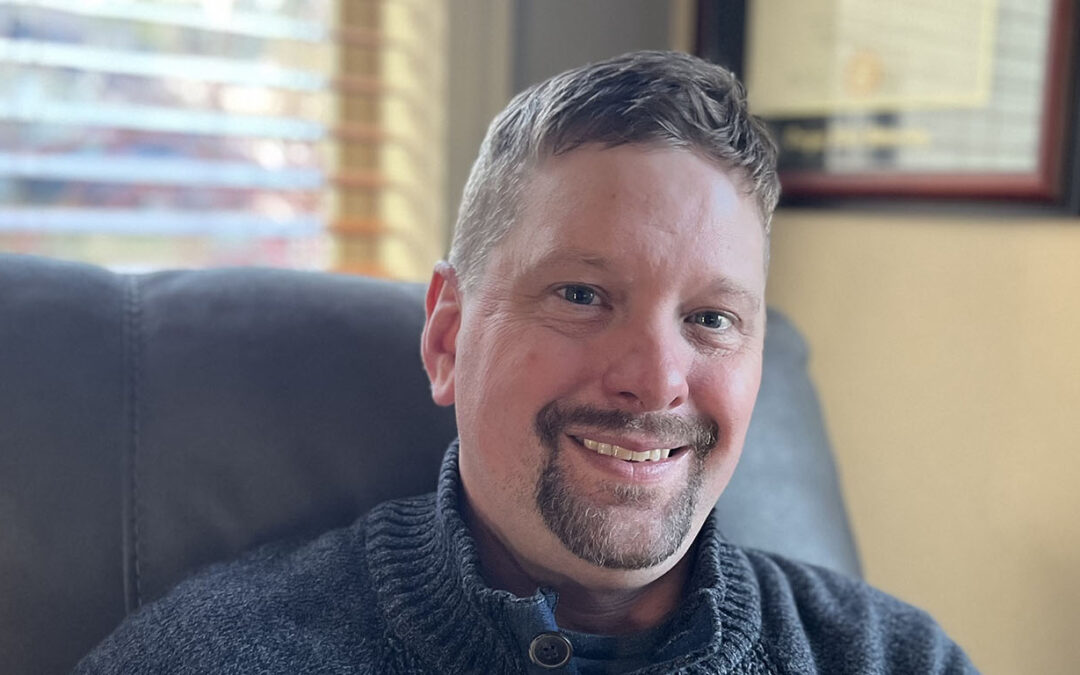
Mar 17, 2023 | AOC News
The Association of Oregon Counties (AOC) is a 23-member staff of professional employees with broad duties and skill-sets. Each team member helps make AOC the success it is today. Here is an opportunity to meet a member of your AOC team.
Meet AOC County Road Program IT Trainer & Communications Specialist, Robert Yde
Robert Yde joined the AOC team in February of 2023 as IT Trainer & Communications Specialist. In his role, Robert primarily supports the public affairs and communication needs of the County Road Program (CRP). He also serves as the first point of contact and trainer for CRP’s Integrated Road Information System (IRIS).
After graduating from college, Robert spent five years in the U.S. Army as a public affairs specialist, including a 15-month deployment to Baghdad, Iraq. Following his time in the army, he relocated to Oregon and continued to work in public affairs, first at the Oregon State Hospital, then at Samaritan Health Plans in Corvallis. In 2018, Robert changed careers and began his first year of teaching middle school language arts and social studies courses in Albany, which he continued to do until joining AOC in early 2023.
Robert holds a Bachelor’s degree in sociology from North Carolina State University, as well as a bachelor’s degree in education from Oregon State University.
AOC County Road Program
Robert’s position is housed in the CRP department of AOC.
The AOC CRP was established in 1990 as a cooperative with the OACES to provide advocacy, education, and cost-effective solutions as a trusted central resource for information and technical assistance for Oregon’s county road departments. The purpose of the CRP is to enhance county road management capabilities with programs of shared technical assistance. The core functions of CRP include: advocating for the county road system; providing education and information to road officials; providing cost accounting software – IRIS – for county road departments; and staffing OACES.
Why Robert Loves AOC
“County government is often overshadowed by federal and state government, however, county governments provide essential services to their citizens and the communities within them. Something that I love about AOC is how the organization works hand-in-hand with our county partners to offer tools, resources, and information to further empower our local governments to best meet the needs of their citizens.”
What Interests Robert in His Work
“Although I’ve always been interested in journalism and an avid follower of the news, I found my way into the public affairs world by chance when I joined the Army. My first choice of jobs was not available at the time, and public affairs was offered to me instead. As I learned the job, the part that really resonated with me was being able to tell the story of individual soldiers and the work they were doing. The opportunity to meet a wide-range of people, hear their stories, and be able to share these stories with a wider audience is still my favorite aspect of public affairs.”
What Robert Wants to See in the Future for AOC
“I truly believe that being able to address issues and find solutions at the local level is more important than ever. The decisions and actions of local governments often have the greatest impact on peoples’ daily lives, and I’d like to see AOC continue to work closely with counties to find efficient and effective solutions that improve the quality of lives for Oregonians across the state.”
Outside of AOC
Outside of AOC, Robert enjoys playing guitar and listening to music (preferably live), watching sports, and playing video games with his 14-year-old son. Additionally, when it is not raining, Robert likes to spend time outdoors with his wife and their two dogs.
Contributed by: Megan Chuinard | Public Affairs Associate
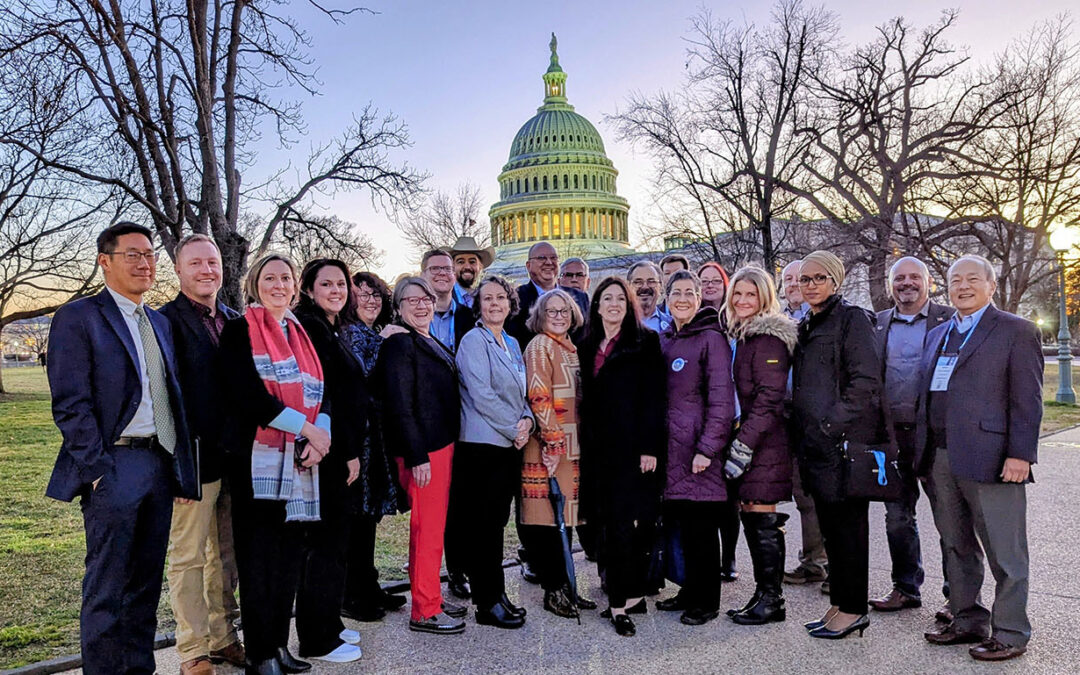
Feb 28, 2023 | NACo
Thirty-seven Oregon county commissioners, judges, chairs, and staff traveled to Washington, D.C. to participate in the 2023 National Association of Counties (NACo) Legislative Conference, held February 11-14.
County officials also met with Oregon Senators Ron Wyden and Jeff Merkley to advocate for Association of Oregon Counties (AOC) federal policy priorities.
First-time attendee, Polk County Commissioner Jeremy Gordon commented, “It was powerful to join my AOC colleagues to speak with Senators Wyden and Merkley with one voice around our shared needs for behavioral health crisis services, housing, flexible transportation funding, and sustained SRS funding.”
During the conference, the Oregon delegation engaged in NACo policy discussions through NACo’s policy steering committee process, as well as breakout sessions, and general sessions, hearing from a range of speakers in the federal government, including President Joe Biden, U.S. Secretary of the Treasury Janet Yellen, U.S. Transportation Secretary Pete Buttigieg; U.S. Secretary of Agriculture Tom Vilsack, U.S. Department of Health and Human Services Secretary Xavier Becerra, and administration staff.
“Learning the ways we can leverage this time of historic investment to help our communities is motivating. Figuring out how to navigate the federal funding streams provides an abundance of opportunities,” said Klamath County Commissioner Kelley Minty of the programming and resources provided during the conference.
The conference offers not only policy discussions, but a platform for connecting with commissioners across the United States. “I was able to learn about commonalities and the innovative ways federal programs are implemented in other communities, and through the Human Services and Education Steering Committee, I was able to give voice to the mental health struggles Polk County youth and adults are experiencing and ways we can better align the intentions of federal programs with my community’s needs,” said Gordon.
AOC Executive Director Gina Firman Nikkel added, “The conference is a key point for our commissioners to network together, get to know each other, build trust, and meet commissioners from other counties to work on key issues that are important to them.”
NACo steering committees tackled a number of issues relevant for counties across the U.S. and took positions on policies that would inform NACo’s work among federal agencies, Congress, and the White House on issues ranging from wildfire, to health care, to broadband, among others.
The work addressed in the steering committees unite counties across the United States in their advocacy efforts at the national level. Tillamook County Commissioner David Yamamoto agreed, “The issues that we face in individual counties across Oregon and all across Oregon are the same issues that you find across the nation.”
Notably, during the final day of the conference, NACo announced the appointment of AOC Executive Director Gina Firman Nikkel, Ph.D. to the newly created NACo Mental Health and Wellbeing Commission. The commission will work to drive change in the nation’s mental health system and policies.
“Participating in NACo is one of the best things you can do not only for your professional development, but you bring new and innovative ideas back to your county,” said Clackamas County Commissioner Martha Schrader, who chairs the NACo Community, Economic, and Workforce Development Steering Committee. She urged county officials to engage in their national association.
County officials across Oregon found meaning in the program content, as well as the networking opportunities. “The great thing about NACo is the comradery,” said Yamamoto.
Proposed NACo Interim Policy Resolutions can be found here.
AOC federal priorities can be found here.
Contributed by: Megan Chuinard | Public Affairs Associate

Feb 27, 2023 | NACo
On Feb. 21, the U.S. Department of the Treasury (Treasury) resumed operations of its Office of Recovery Programs Contact Center which provides technical assistance to recipients of American Rescue Plan Act (ARPA) funds administered by Treasury. This includes the State and Local Fiscal Recovery Fund (Recovery Fund), the Local Assistance and Tribal Consistency Fund (LATCF), and the Emergency Rental Assistance (ERA) program. Treasury alerted county recipients to the Contact Center’s reopening on Feb. 14, stating that:
“The Contact Center closed last year due to an administrative funding shortfall, which impacted Treasury’s ability to provide support to recipients of funding from the Office of Recovery Programs. However, late last year Congress provided additional resources for the Office of Recovery Programs in the Consolidated Appropriations Act, 2023. As a result, Treasury is able to reopen the Contact Center in order to better support recipients by answering their phone and email inquiries.”
Since the bill’s initial introduction in Oct. 2021, the National Association of Counties (NACo) has advocated for the passage of the State, Local, Tribal, and Territorial Fiscal Recovery, Infrastructure, and Disaster Relief Flexibility Act to provide counties with the flexibility to invest funds in transportation infrastructure, Community Development Block Grant (CDBG)-eligible and natural disaster related projects. The bill was ultimately passed as an amendment to the Fiscal Year 2023 omnibus appropriations bill (Consolidated Appropriation Act of 2023) in Dec. 2022. In addition to the expanded flexibilities, the bill also unlocked unobligated administrative funds for the Office of Recovery Programs that has allowed Treasury to reopen this contact center. Treasury is expected to release additional guidance for the bill’s expanded eligible uses in the coming month. NACo will alert counties when this guidance is available.
Since ARPA was enacted in March 2021, counties have been working tirelessly with Treasury to ensure Recovery Funds have the flexibility to properly address our unique needs and that we are fulfilling our role as sound financial stewards. Treasury has been a critical partner and valuable resource throughout the implementation of the Recovery Fund and with the recent release of LATCF payments, this partnership is as critical as ever.
NACo also has several resources available to counties to assist with the continued implementation and investment of the Recovery Fund and LATCF. Counties may ask questions regarding ARPA recovery funds here and NACo staff will respond via email.
Contributed by: Maxx Silvan | NACo

Feb 24, 2023 | AOC Business Partner
At the beginning of every year, the CIS Board of Trustees, including AOC Executive Director Gina Firman Nikkel, attend a day and a half strategic planning session to discuss the overall strength of the organization. The board reviews the status of CIS’ strategic initiatives and is presented with professional analysis from independent industry experts who assess the health and strength of CIS. Highlights from the board’s most recent session include:
- Financial Audit Presentation by Plante Moran, PLLC
- Property/Casualty (P/C) Trust Actuarial presentation by Aon Risk Consultants, Inc.
- Capital Adequacy Assessment for CIS Benefits and P/C Trust by PricewaterhouseCoopers (PwC)
- CIS Collaboration Center Update
- Managing the Risks of Post-Traumatic Stress Disorder (PTSD) in Public Safety
- Reinsurance Markets and Planning
Financial Audit
Plante Moran, one of the nation’s largest accounting firms, verified CIS’ good standing and strong financial footing — giving the organization a clean audit. The firm shared with the board that CIS’ accounting principles are solid (see full audit on CIS’ website). The audit report did provide an overview of the investment losses that CIS faced with the decreased market value from bonds and stocks in 2022 — but CIS weathered these adjustments for unrealized market value changes and maintained extremely solid financials. They concluded that CIS’ finances are appropriately reported, and the organization’s accounting systems are well-organized.
Actuarial Report
The respected actuarial firm, Aon Risk Consultants, analyzed CIS’ past experiences to evaluate the financial impact of current economic and social trends on future events. Aon’s report helps determine CIS’ funding target for the upcoming fiscal year. The actuaries noted that liabilities related to public safety services were increasingly costly to settle. They also noted an increase in auto liability claims. However, they explained that CIS’ experience with public safety services and auto liability claims followed trends that they noticed with other risk pooling programs across the nation.
PricewaterhouseCoopers Assesses CIS’ Capital Adequacy
PricewaterhouseCoopers firm (PwC) provided the CIS Board with a capital adequacy assessment for the CIS Benefits Trusts as well as the Property/Casualty (P/C) Trust during the session. They conducted a formal analysis of capital reserve funding requirements. The analysis was based on the requirements of the Member Equity Policy and considered many internal and external factors including underwriting risk, reserving risk, asset and credit risk, and operational risk.
PwC’s report found that both CIS’ capital for the Benefits Trusts as well as the P/C Trust is adequate and are in the proper range. This was important because it confirms that CIS has enough funds in reserves to cover catastrophic claims and other financial disruptions — such as the market value declines on investments.
Collaboration Center Update
The CIS Board provided direction to staff to begin plans for a new Collaboration Center to serve as an office for staff and training center for members and agents. CIS sold its Salem and Tigard office buildings, opened a temporary Wilsonville office, and purchased land in Wilsonville for a future Collaboration Center.
Plans call for a building with multiple meeting rooms, including a large room that can be used for member/agent training. Staff has selected an owner’s representative, architectural firm, and construction manager/general contractor through request for proposal (RFP) processes. CIS plans to meet with the architectural firm this quarter to kick-off the design process.
Managing the Risks of Post-Traumatic Stress Disorder (PTSD) in Public Safety
In June 2019, Senate Bill 507 passed, making PTSD a presumption for public safety workers (i.e., full-time firefighters, police officers, corrections officers, parole/probation officers, and first responders). CIS supports public safety workers having presumptive claims. CIS’ public safety team is working proactively to prevent PTSD claims by:
- Providing critical incident grants to public safety personnel and in some cases, non-public safety, to receive mental health services that have a focus on PTSD.
- Providing training around PTSD via Employee Assistance Program (EAP), peer support, and total worker health.
- Developing mental health providers around the state that have a focus on PTSD in public safety or military.
- Including CIS Benefits Director Mike Beyrouty to find ways for the CIS Benefits programs to support PTSD-prevention efforts.
The purpose of the report was to begin CIS Board discussions on additional services that can help reduce the impact of PTSD.
Reinsurance Markets and Planning
CIS purchases reinsurance to protect the P/C Trust from catastrophic and high dollar claims.
For property, CIS self-insures the first $500,000 of each claim and offers $600 million of shared limits. For liability, CIS self-insures the first $1 million per claim but offers liability coverage up to $20 million. For cyber, CIS self-insures the first $250,000 of each claim and offers an optional reinsured tier of coverage with limits up to $1.25 million.
Reinsurance coverage cycles between soft and hard markets. Experts point to missed earnings targets in recent years as evidence that the industry is in a hard market. This means reinsurers have greater bargaining power and can push for higher premiums and restructure terms to their advantage, such as limiting coverage for certain risks or demanding higher retentions (deductibles).
CIS marketed reinsurance coverage to dozens of carriers during 2022 to maintain the best carriers, pricing, and terms to financially back its property and liability programs. Marketing efforts included strengthening partnerships with existing carriers and identifying new carriers to diversify risks and increase capacity.
In this tough environment, CIS’ efforts to build and strengthen its reinsurance partnerships means that they can retain the needed reinsurance despite a hard market.
Contributed by: Bill LaMarche | CIS Public and Member Relations Manager
*Sponsored content provided by AOC Business Partner.

Feb 24, 2023 | AOC Business Partner
At the recent Academy of Architecture for Justice Conference, I had the opportunity to facilitate discussion on equity in the justice system. These discussions focused on knowledge communities in education, social services, nonprofit organization and justice agencies couples with resources, and evidence-based support systems needed to create a healthy society.
The Challenges: We know that healthy family relationships have a positive impact on the incarcerated, their children, and their loved ones. Strong relationships can improve the cause-and-effect cycle of recidivism and reduce the social, economic, educational, and health consequences to those within the secure treatment environment. These relationships, however, often face barriers by the very facilities built to house them. For instance, programs that encourage incarcerated mothers to record themselves reading storybooks to their children often must resort to a noisy corridor due to lack of dedicated private space. Other facilities may lack accessible and welcoming visitation rooms to connect families. Organizations who dedicate time to engaging at-risk youth lack flexible and comfortable spaces to bring education to their communities. These are the sorts of challenges that community partners face in their work and yet, they are often not at the table when it comes time to plan facilities.
The Opportunities: Working together with our government agency clients, we’re bringing more stakeholder voices to the table, working with our clients to find creative ways to integrate community partners into the big picture of justice facility designs. When we couple our design knowledge and the agency needs with the offerings of community partners, we all help to restore individuals back to their families and communities. Together we’re preparing spaces for a more equitable, healing, and transformative environment for individuals and the communities where they live. We design this way because we always remember that the incarcerated are individuals with children, partners, and dreams of once again making a positive impact on society.
The opportunities abound that can make a difference in how we deliver services and resources that positively impact individuals and communities. We simply need to advocate for equity for all stakeholders in justice design.
Contributed by: Joanna Wozniak, AIA | DLR Group, Senior Associate
*Sponsored content provided by AOC Business Partner.

